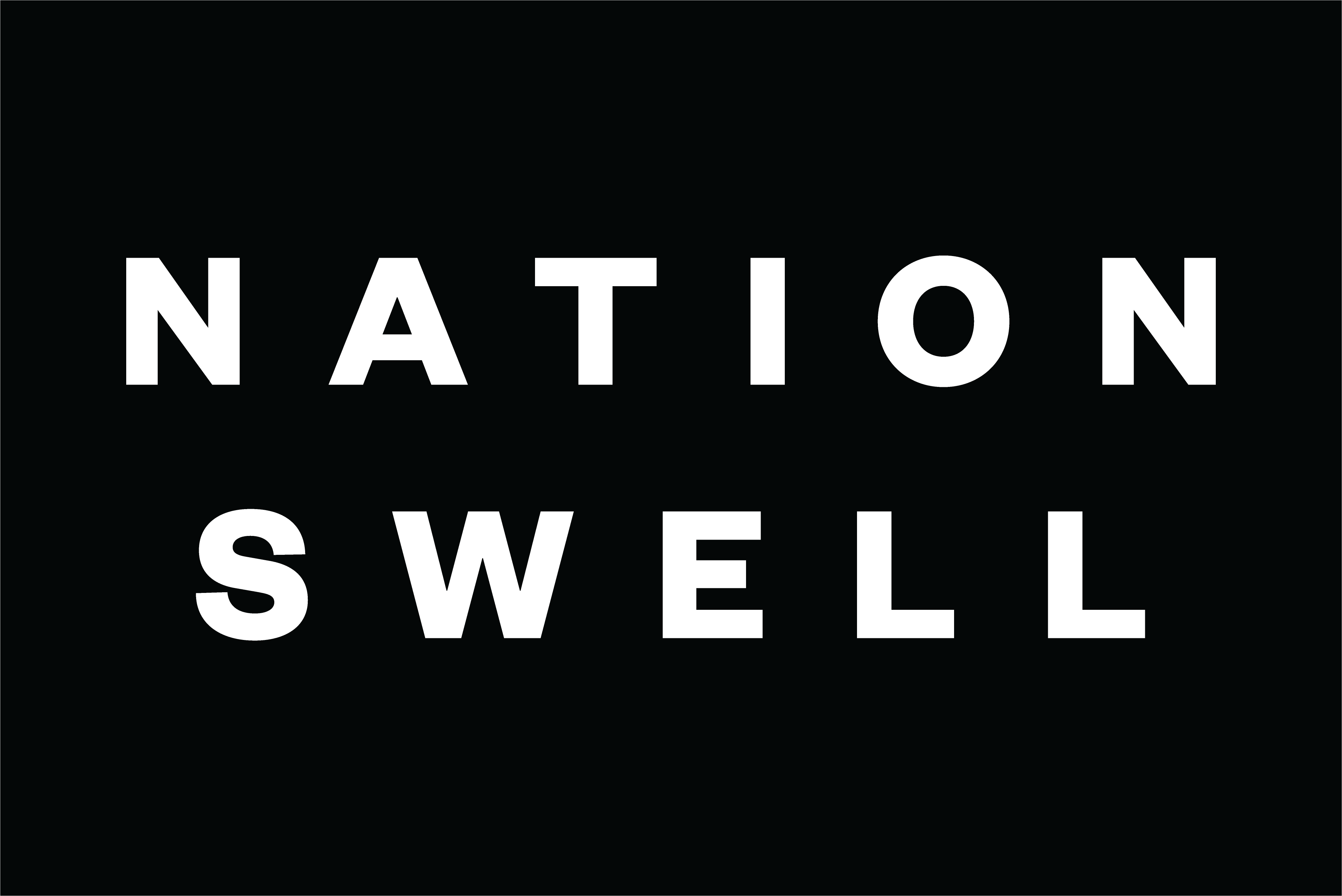Amidst stagnating rates of charitable giving and volunteering in the U.S., Bonterra — a software company focused on helping nonprofits, foundations, corporations, and beyond scale their impact — has a mission to boost giving and volunteerism to 3% of U.S. GDP by 2033. So, they took a fresh approach to Bonterra’s annual impact report. Developed in partnership with NationSwell, the 2025 Impact Report gives Bonterra’s customers actionable insights on how to empower the “Generosity Generation”: a cross-generational community empowered by technology to unlock time and dollars, in order to increase giving and drive the impact they want to see in the world.
For this installment of Five Minutes With, NationSwell spoke with three key Bonterra leaders to unpack the report’s insights: Ben Miller, SVP of data science and analytics; Kimberly O’Donnell, chief fundraising officer; and Sara Kleinsmith, principal strategist for thought leadership and corporate messaging.
“Collaborating with Bonterra to create their new Impact Report was an inspiring challenge,” said Amy Lee, Chief Strategy Officer at NationSwell. “We worked very closely with Ben, Sara and their team to push beyond standard insights. Bonterra has a wealth of smart insights from its products and relationships, and we wanted to make sure that whatever we included was data-driven, forward-looking and on target for the goal to catalyse a new Generosity Generation.”
We asked the Bonterra team how they blended proprietary data with powerful storytelling to create a tool that goes beyond standard, backward-looking reporting — serving instead as a strategic blueprint for how organizations can rethink, revamp, and re-energize their entire approach to impact with intentionality and inspiration at its core.
Here’s what they had to say:
NationSwell: Tell us a little bit about what you set out to accomplish with this report. What were your initial goals, and how did they evolve?
Ben Miller, Bonterra: One thing we know about movements is that they aren’t a start and stop experience — they’re ongoing. So when we sat down to think about creating this report, we did it through the lens of building the “Generosity Generation” — a multi-age community of donors, volunteers, funders, and nonprofit leaders that gets activated with the help of technology to respond to crises faster; build lasting relationships; and overcome all of the barriers that have caused charitable giving and volunteering in the US to remain stuck at 2.5% of GDP for over 50 years.
In a way that mirrors what our technology is designed to do, we wanted to create a report that could deliver insights in a faster, more personalized way, and that was an important framework adjustment that served us well. We didn’t spend as much time as we had in the past focusing on the tallies and the totals (although they are still there in the report to substantiate our findings) — we wanted to dive right in. We also added an interactive tool that allows organizations to benchmark themselves against other organizations.
NationSwell: How did Bonterra’s proprietary data play a role in shaping the report?
Ben Miller, Bonterra: One of our huge strengths is that we have a true data science team, not just data marketing folks. Logan, our chief marketing data analyst, constantly pushed back, saying “there’s nothing here” or “this isn’t strong enough,” and as a result we discarded a lot of findings. You might not see it at first glance, but the analysis was thorough. We only included insights that were statistically sound and actionable. A lot of reports don’t go that deep, but our team basically operates like scientists.
Existing data tells us that only 19.4% of donors give a second gift, but our finding was that once they do, they’re far more likely to stick around. That first 90 days is absolutely critical, but there are also folks who give way later — giving up entirely will likely not serve you in the long run. We also saw that about 10% of donors give after more than a year. So even if someone doesn’t respond in that first 90 days, it doesn’t mean they’re gone; you just have to treat them differently.
Sara Kleinsmith, Bonterra: That ties into another data point: 63% of nonprofits stop after one rejected grant application, but on average it takes 1.24 tries to get funded. So many organizations are missing the chance to go back, learn, refine, and try again. Fundraising is evolving, and there’s a real opportunity in persistence and learning from the first “no.”
Ben Miller, Bonterra: Data shows that only 53% of people trust nonprofits — the lowest that trust has ever been, which is a huge issue. But our research shows that you can use digital to help restore some of the trust and humanity that’s been lost over the years. We saw it in disaster response in particular: people were ready to engage, and digital tools helped nonprofits meet that urgency. So it’s not just about maximizing each channel, it’s about using those channels to build relationships. That’s the core insight: digital doesn’t have to mean disconnected — it can actually bring people closer, if we’re intentional.
NationSwell: What were the internal conversations like on how to strike the right balance between qualitative and quantitative storytelling?
Sara Kleinsmith, Bonterra: We’ve done a lot of customer stories and case studies, so we had strong qualitative storytelling to draw from — our customers at Bonterra have incredible missions and impact. The challenge was linking those stories to the data.
One way we did that was during a recent webinar, when we matched our customers to specific data points and asked them to speak to the proof we wanted to showcase. It became a kind of matching exercise — pairing the mission, the people, and their challenges, like burnout or federal funding cuts, with the insights from Ben’s team. From there, we asked: which customers can speak to this? How is Bonterra helping solve these problems?
Ben Miller, Bonterra: Instead of starting with who we knew and pulling from what was available, we started with the data: who’s doing X really well? Then we went out to those organizations and asked if they’d share their stories. That led to fantastic case studies.
Kimberly O’Donnell, Bonterra: Most impact reports rely on examples people already know are good. What we did was different — we had enough breadth to ask: who’s doing this best, why, and what’s the “secret sauce”? What makes a fundraising campaign or grant program truly transformational?
NationSwell: What were some of the lessons you learned in putting this report together — were there any unexpected obstacles or challenges? How did NationSwell help you to meet those challenges?
Ben Miller, Bonterra: One of the toughest parts was wanting the data to tell the story while also realizing that waiting on the data meant risking not having enough time. We had to pivot together as insights emerged. We’d spot something interesting, ask, “Is there more here?” and then look for supporting organizations.
It was also challenging because we were rigorous. We reviewed the data four or five times, and sometimes had to revise earlier numbers. That could’ve created confusion or mistrust, but instead it fostered transparency and a shared commitment to getting it right.
Internally, we all understood we were working toward something meaningful, and NationSwell played a huge role — the team didn’t push us down a rigid path, they were flexible and helped us shape the right story as the right data came in.
Sara Kleinsmith, Bonterra: We kept revisiting: what comes first, the data or the narrative? At one point, we were curious about generational giving — Gen Z, millennials, boomers, Gen X — who’s giving the most, who should we be reaching? But it was hard to chart that internally. Then Ben had this great idea: instead of age, what if we looked at impact maturity — where someone is on their giving journey? Are they a first-time donor or a lifelong giver?
That shift reframed everything. Rather than focusing on age, we began thinking in terms of giving readiness. It made the concept of the “Generosity Generation” more inclusive — a multi-generational group of givers and doers, each with different motivations and maturity levels.
It felt like a win — something that came out of a shared insight between us, NationSwell, and Ben’s framing. Generational labels can be reductive, but generosity spans all ages. This unlock helped us to better meet people where they are in their giving life.
NationSwell: Based on the report’s insights, what are your call-ins for our membership community when it comes to charitable giving? What feels most important for them to take away from this report?
Kimberly O’Donnell, Bonterra: Our call to action is to digest the data — there are six key takeaways, some relevant to nonprofits, others to funders and corporate partners. Think critically about how your practices compare, and how you might adopt or adapt based on what the findings show.
Sara Kleinsmith, Bonterra: And for anyone creating thought leadership or content — especially those reaching donors, partners, or investors — we’re at a critical point in how we work with AI. Writers, marketers, and creators need to be transparent: How are you using AI? How are you using human creativity alongside it? Customers, donors, and volunteers want to understand that balance. It’s evolving fast, and being clear and thoughtful about it positions you as a leader, no matter your sector.
Kimberly O’Donnell, Bonterra: That ties into how we delivered this impact report — it’s unique. If you’re advising others on their own reports, show how each takeaway connects directly to your audiences in digestible ways. It’s not just about showcasing big impact or good stories. What are the three to six insights you want readers to remember?
Ben Miller, Bonterra: Our big goal is 3% by 2033. We can’t get there alone — we’ll need everyone to contribute. If you’re part of the NationSwell community, join us. Even a 2% improvement across your network, your organization, your campaigns — it all adds up. That’s how we hit the goal: through collective action and shared best practices. That’s what the Generosity Generation is about.

 "
"
